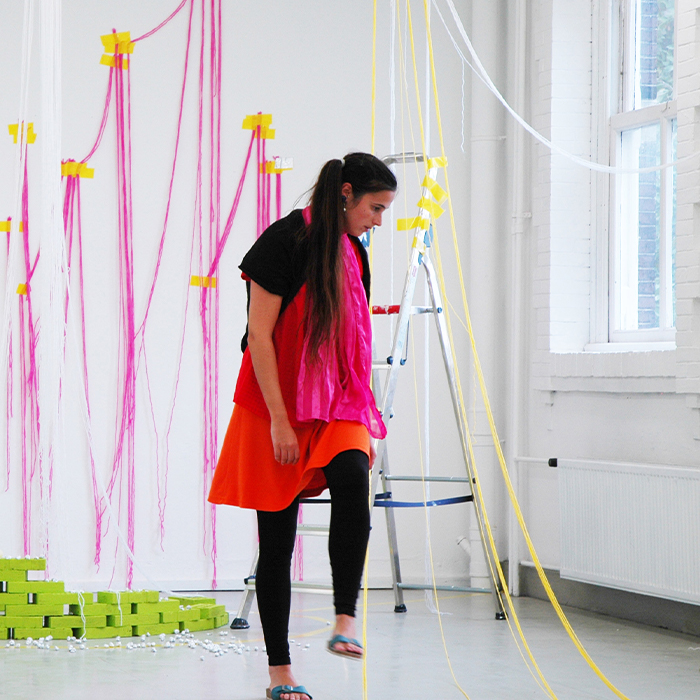Tamara Van San is a sculptor. Sometimes she is a ceramic sculptor. The one thing to expect from this Belgian artist is the unexpected. Her materials range from ceramics to synthetic gypsum to fiberglass. The material she uses depends on what she’s trying to say. And of course the problem that the meaning of a non-figurative sculpture is often approached by the viewer — and perhaps even by the sculptor — in a superficial way. So how does she get the viewer to invest something of themself in what she has put in front of them?
“My chief hope is to find a viewer who can genuinely read forms; who has not forgotten that the way of looking at things — all things everywhere and all of the time — and thinking about them is constantly changing.
“What interests me most are ideas relating to form. Is it new? Will it eventually hang or lie or stand? And of course, I must ask myself what material and technique has the greatest potential to communicate. My main task is finding new formal solutions by thinking through my own actions with the material, whether it is clay or fiberglass, natural or man-made. How do I get people to truly begin to experience my nonfigurative shape? What must I do to guide the viewer’s eye? How do I trigger their emotions, thoughts, images and stories so that the sculptures speak to them? My answer of course will depend upon the questions I first ask myself.
“What makes a shape so appealing? Certainly not a social or political concept. I want my viewers to be concerned with forms, with formal solutions, not — or at least hardly ever — with art history or social or political matters…at least not explicitly.
“Can the pieces effect be spiritual, emotional or sensory? I often work with circles and ovals. For me they refer to the infinite. The form influences the way you experience the object. There is something pure and untainted about geometric forms, which leaves us free to look at them. You can also say things by deviating from these forms, by corrupting them, making them distorted or clumsy. I want to create a kind of confusion or astonishment so that people pay more attention to them.
How do sculptures speak? Is it by resembling, or by differing from other things in terms of form?
Some have said there is something disturbing about the form of my works. In some cases it’s the waywardness of the material, the ability of the clay and glaze to speak. Is it important to defy the way we view and think about things, and not simply defined them?
Each ceramic piece poses the same challenges: how do I get the clay to speak, to be irreplaceable?
An artist can choose to make work easier; work that is less surprising or frightening. But I have chosen to astonish, and thereby communicate my own astonishment at things. If I want one thing, it is the opportunity to arouse and retain the viewer’s astonishment.
Ideas taken from an interview by Hans Theys


